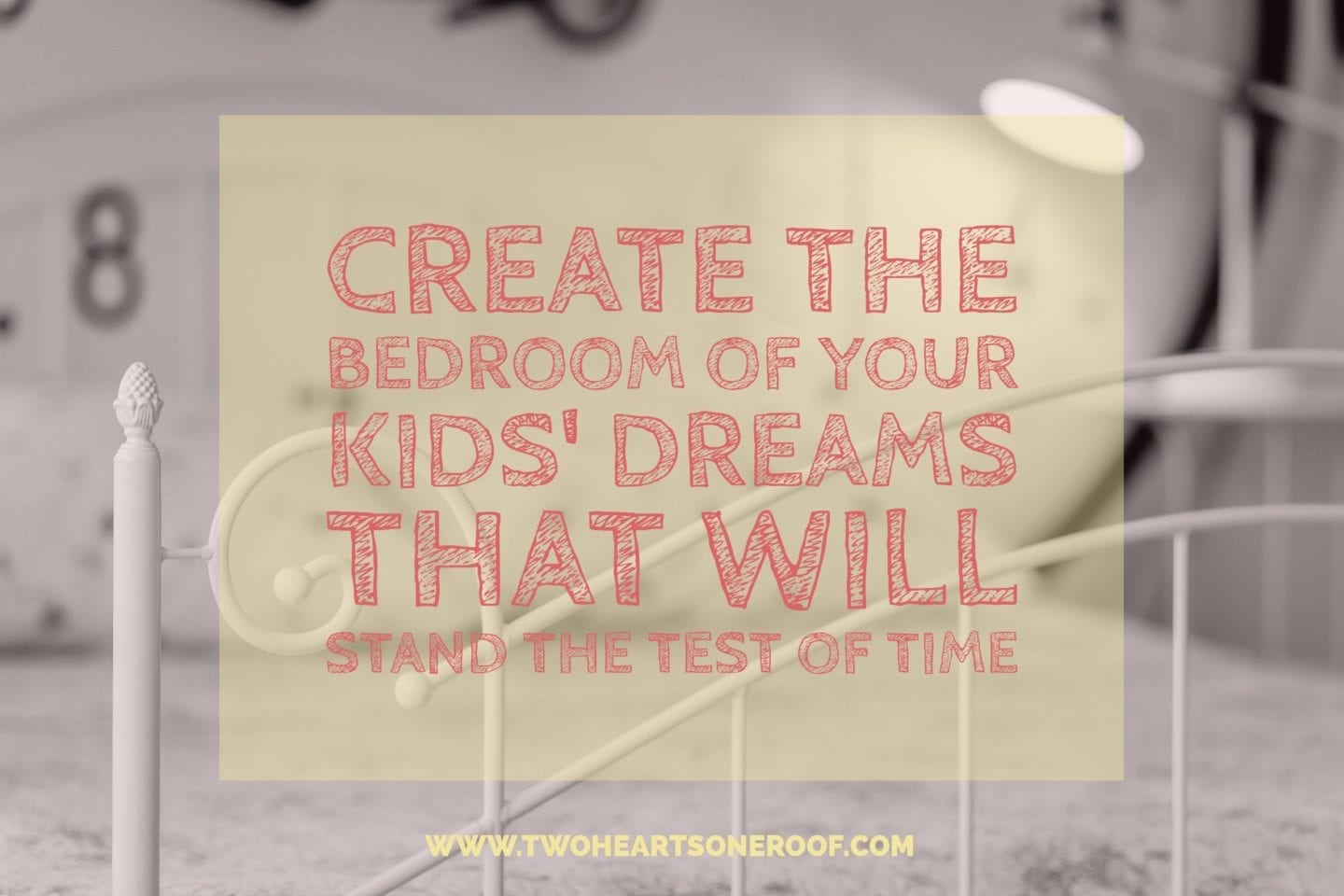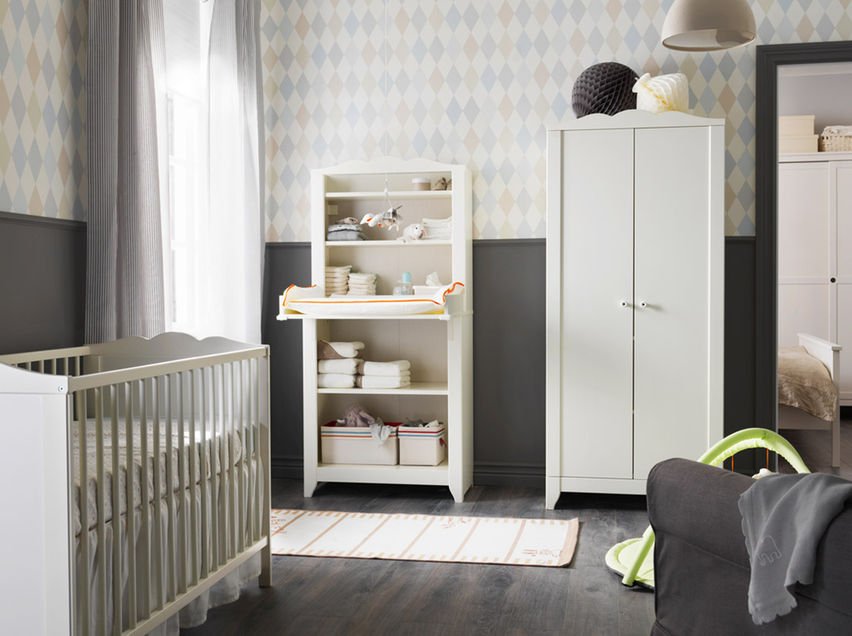 Decorating a kid’s bedroom can be tricky – their tastes change at the drop of a hat and all of a sudden they’ve outgrown everything they begged for only a month or two earlier. While this is all part and parcel of growing up, it can be frustrating to have to keep redecorating, or dealing with the whining about the uncool bedroom they now have to suffer. Creating a room which is able to grow with your child (or children, in the case of multi-kid rooms) is the key to longevity, and ensuring they have the room of their dreams for more than just a couple of months. If you’re considering redecorating your kids’ rooms, make sure you read this before you take the plunge.
Decorating a kid’s bedroom can be tricky – their tastes change at the drop of a hat and all of a sudden they’ve outgrown everything they begged for only a month or two earlier. While this is all part and parcel of growing up, it can be frustrating to have to keep redecorating, or dealing with the whining about the uncool bedroom they now have to suffer. Creating a room which is able to grow with your child (or children, in the case of multi-kid rooms) is the key to longevity, and ensuring they have the room of their dreams for more than just a couple of months. If you’re considering redecorating your kids’ rooms, make sure you read this before you take the plunge.
Ask for their input
While children like to think of their bedroom as their own, personal den away from the hubbub of the rest of the home, it’s important that they learn that it’s still part of the house as a whole. This leads to the understanding of compromise – it’s still your house, so they need to understand that it has to be decorated to your standards. This being said, allowing their input enables them to feel some sense of artistic control, while you’re still holding the reigns. If you allow them to completely redesign their bedroom, chances are it’s going to be completely in the “here and now”, without the consideration of longevity. If you dictate general style and themes but allow them to accessorize and add a few personal flourishes, you’re far more likely to create a room which will both stand the test of time but also satisfy their own personal tastes.
Use timeless furniture
If you want a room which will require little work to grow alongside your children, using timeless pieces of furniture will save you a whole lot of money in the future. Yes, a treehouse bed might look totally adorable and be right up the street of your seven year old, but when they’re 12 and expect you to buy them a new bed because the treehouse is no longer cool, you might come to regret that purchase. Try to avoid going for the child-size furniture if you want to avoid rebuying in the future – while all their clothes might fit while they’re only three feet tall, in a few years they’re going to need more space, which means rebuying that furniture. Keep large, expensive pieces of furniture neutral and timeless, and you can decorate around them for years to come.

Pay special consideration to the bed
As mentioned previously, if you’re trying to keep costs to a minimum, or you’re avoiding decorating in the future, it’s best to avoid the cute, fun kid’s beds in favor of something which will stand the test of time. Going for full-size beds instead of the smaller children’s beds also allows them to grow into them, without having to worry about replacing them in the future. The same goes for multi-children rooms – if you’re going for bunk beds or twin beds, make sure you go for full-size beds from the start that they’re able to grow into – you can make them cute and fun with fairy lights, bunting, and beautiful bedding.
Use accessories to make it age appropriate
When you buy beautiful but very grown up bedroom furniture with longevity in mind, you need to be creative to still make the room feel like a child’s bedroom. Bringing in soft furnishings, artwork, and trinkets which are age appropriate is a far cheaper way to bring personality into their bedroom than having to redecorate on a yearly basis. Once they outgrow their decorations, they’re straightforward and fairly cheap to replace, and you won’t have to worry about repainting or refurnishing the entire bedroom.

Create separate sleeping, fun, and education areas
As your kids grow up their interests are going to change, and their expectations for their bedrooms will change alongside. Splitting a bedroom into separate sleeping, playing, and homework areas allow you to adapt each bit as you go, without having to overhaul the entire room, and it might even help them to get a better night’s sleep. For example, while kids are younger they might enjoy a craft area or soft play space in a small section of their room. As they get older, this area becomes obsolete, and it might be more appropriate to introduce a desk and bookshelves for homework or slightly older crafts. Keeping the room compartmentalized allows you to make these changes without having to do much to the rest of the space, keeping it all age appropriate without too much money or effort. The key here is thinking ahead – even when you’re creating the room for the children when they’re tiny, it’s worth having an idea how you can adapt these spaces as they get older, without having the overhaul the entire room.
Don’t forget the importance of storage
Kids accumulate a whole lot of stuff, however hard you try to keep it down. Previously we talked about the importance of buying a wardrobe or chest of drawers big enough for them to grow into – or their clothes to grow into, more specifically. The same goes for everything else, and prioritizing good storage solutions while you’re decorating will save you a whole lot of hassle further down the line. Choosing beds with ottoman storage underneath and putting cupboards in tricky to use nooks and crannies means clutter will be kept to a minimum – when you can convince them to tidy their rooms, that is. A cute toy box is fine, but you’ll feel grateful that you thought ahead when they no longer want that toy box.
Creating a bedroom that will stand the test of time for kids can be really difficult, but all it takes is a few smart purchases and a bit of forethought to keep cost and hassle to a minimum. Remember to keep large, investment pieces neutral, so they will work with any decoration, and use accessories and trinkets to make the room age appropriate and fun.
*Images via Ikea.com
*This is a collaborative post